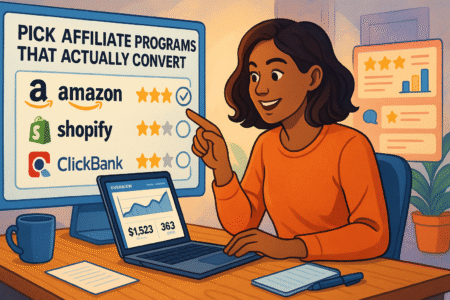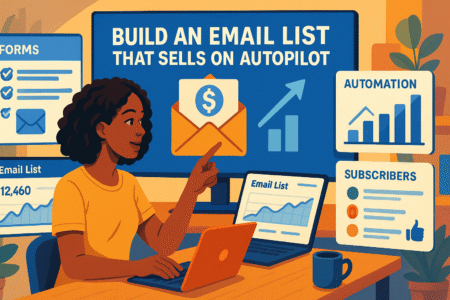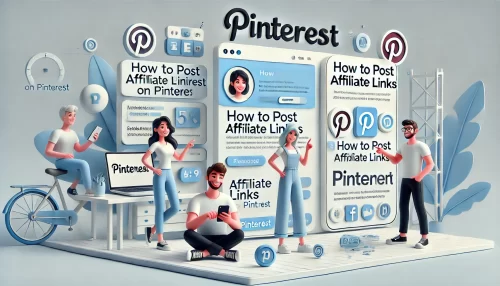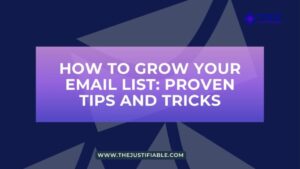Table of Contents
Starting an affiliate marketing online business sounds exciting, but how do you turn clicks into real income? Can you actually build a steady stream of earnings without paid ads or a massive following? And which tips actually move the needle when you’re serious about growing?
If you’ve asked yourself these questions, you’re not alone. A lot of people jump into affiliate marketing hoping for quick wins, only to hit a wall. That’s why I’ve put together this guide—so you can skip the guesswork and get straight to what works.
Whether you’re just starting or trying to level up, these strategies are designed to help you earn more, faster, and with a lot less stress.
1. Choose the Right Niche With High Earning Potential
Before diving into an affiliate marketing online business, you need to get your foundation right. That starts with choosing a niche that has both earning potential and long-term relevance.
How to Validate Niche Profitability Before You Commit
Let me break it down for you—just because people are talking about a niche doesn’t mean it’s profitable. To truly validate a niche, you’ll want to dig into the numbers behind it.
- Use Google Trends to see whether interest in the topic is growing or dying.
- Check affiliate marketplaces like ClickBank, Awin, or CJ Affiliate to see what products exist and what their gravity scores or popularity rankings look like.
- Look at keyword search volume using tools like Semrush or Ubersuggest. If people aren’t searching for your niche, that’s a red flag.
- Peek at competitors’ websites. If they’re loaded with content and product links, it means the niche likely makes money.
The key is to find the sweet spot between strong demand and manageable competition.
Why Passion Alone Isn’t Enough in Niche Selection
I’ve seen so many people start blogs around what they love—travel, fitness, even knitting—only to burn out when earnings don’t follow. Passion matters, sure. But if people aren’t buying in your niche, your effort won’t translate into income.
A smarter approach is to choose a niche where your passion overlaps with profitability. Think of it like this: You need a market that spends money. Ask yourself:
- Are there products people repeatedly buy in this space?
- Do those products offer affiliate programs?
- Are competitors making money—or just shouting into the void?
If you can’t answer those questions with a solid “yes,” it might be time to pivot.
The Role of Competition and Demand in Sustainable Income
No competition usually means no money. But too much competition? That can drain your motivation fast. The goal is to find moderate competition with steady demand—something people need month after month.
Evergreen niches like personal finance, wellness, tech gadgets, or online education often strike this balance. You’re looking for:
- High demand, proven by search data and product popularity.
- Enough competition to show it’s profitable.
- Space to carve out a unique voice or angle.
One trick I use is searching niche forums or Reddit threads to spot pain points and underserved questions. That’s where you can stand out and start earning.
How to Find Evergreen Niches That Keep Paying
Evergreen doesn’t mean boring. It means reliable. If you want to build sustainable affiliate income, focus on problems that never go away—things like:
- “How to save money” in personal finance.
- “How to get fit at home” in health and wellness.
- “How to improve productivity” in business and tech.
These topics attract repeat visitors, ongoing search traffic, and products with long shelf lives. You’ll still have room to explore trends within your niche, but your core content keeps performing.
What I recommend is this: pick a niche that solves a problem people always care about, then layer in your own voice, angles, and experience.
2. Pick Affiliate Programs That Actually Convert

Once you’ve nailed your niche, it’s time to monetize the right way. Not all affiliate programs are created equal—and choosing the wrong ones can kill your momentum.
How to Evaluate Payout Models: CPA vs. Recurring
Understanding payout models is crucial when building an affiliate marketing online business. There are two main types: cost-per-action (CPA) and recurring commissions.
- CPA offers a one-time payout when someone takes a specific action, like signing up or buying.
- Recurring models pay you every month as long as the customer stays subscribed.
If you’re promoting software or services (like email platforms or hosting), go for recurring. It builds monthly income that grows over time. For physical products, CPA may be the only option, but aim for higher-ticket items to make it worth your effort.
In my experience, mixing both gives you a solid balance of immediate cash and long-term revenue.
Top Networks With Reliable Tracking and Support
Not all affiliate networks are trustworthy. You want platforms that track accurately, offer helpful support, and pay on time. Here are a few worth considering:
- Impact – Ideal for bigger brands and has solid reporting tools.
- PartnerStack – Great for recurring SaaS commissions.
- Flexoffers – A beginner-friendly network with a wide product range.
- CJ Affiliate – Trusted by thousands of retailers and includes performance stats.
Stick with networks that offer clear commission structures and dashboards you can actually understand. Nothing kills trust like sketchy tracking or delayed payments.
Avoiding Low-Quality Offers That Kill Your Trust
If you promote junk, your readers will stop clicking. Worse, they’ll stop trusting you. Before you link to anything, test it out—or at least read real reviews.
Low-quality affiliate offers usually have:
- Poor user experience or scammy landing pages.
- High return rates or customer complaints.
- Vague or hidden commission structures.
Ask yourself: Would you recommend this to a friend? If not, don’t recommend it to your readers either.
Metrics That Predict Program Profitability
Some metrics give away how profitable a program will be—even before you join:
- EPC (Earnings Per Click): Shows how much affiliates are making per visitor. Higher EPC usually means higher conversion rates.
- Cookie Duration: The longer the tracking cookie, the better your chance of getting credit for a sale.
- Refund Rate: A high refund rate means lots of unhappy customers—and commissions that disappear.
- Conversion Rate: If you’re sending traffic and not earning, low conversions could be the problem.
Look for programs that report these stats upfront or reach out to affiliate managers who can give you the data directly. It’s worth the extra step.
3. Build a Content Hub That Attracts Buyer Intent
If your content doesn’t attract people ready to buy, you’re leaving money on the table. The goal isn’t just traffic—it’s the right kind of traffic.
Why SEO-Driven Blogs Still Win in Affiliate Marketing
You might hear people say blogging is dead. It’s not. Blogs that are optimized for search still drive some of the most targeted, conversion-ready traffic you can get—without paying a cent.
Here’s why it works:
- People use Google to solve problems or find products—so ranking high means catching them at the decision stage.
- Long-form blog posts have room to add context, comparisons, and calls to action.
- With consistent SEO optimization, older posts keep bringing in traffic months (even years) later.
If you write helpful, specific content around what people are already searching for, your blog becomes a 24/7 salesperson.
Creating Product-Focused Articles That Actually Sell
Product-focused content doesn’t have to sound pushy. In fact, the best converting content usually educates first, sells second.
Think of these formats:
- Product reviews: Honest pros and cons help build trust.
- Comparison articles: “X vs Y” is a high-intent search that often leads to sales.
- Tutorials using affiliate tools: People love step-by-step guides that show results.
Make it personal. If you’ve used the product, share your own experience. If you haven’t, do real research or quote real users. Generic copy won’t cut it anymore.
How to Mix Evergreen and Trending Topics for Consistency
Evergreen content gives you steady traffic. Trending content gives you spikes. You need both for long-term growth.
Here’s how I manage the balance:
- Evergreen ideas: “Best hosting for beginners,” “How to start a blog that makes money.”
- Trending ideas: “Best AI tools for bloggers in 2025,” “Is X product worth it after recent updates?”
Use Google Trends or Twitter search to catch waves early. Just don’t make your entire content plan ride on trends—they fade too fast.
Using Content Silos to Maximize Authority and Rankings
Content silos are a powerful way to tell search engines: “Hey, I’m an expert in this topic.” It’s about clustering related posts under one umbrella and linking them together.
Here’s how to set one up:
- Choose a core topic (like “email marketing tools”).
- Write pillar content that gives a broad overview.
- Link that pillar to several deep-dive articles on subtopics.
This structure helps visitors stay longer, click more, and trust you faster. It also gives Google a clear map of your site’s expertise.
4. Master Traffic Generation Without Paid Ads
Free traffic isn’t just possible—it’s scalable if you know where to look. And you don’t need a massive audience to make affiliate sales. You just need the right strategy.
The Power of Organic Search and How to Dominate It
Organic search is still the king of consistent, hands-off traffic for any affiliate marketing online business. You write once, rank well, and earn daily without lifting a finger.
Here’s how to set yourself up for success:
- Do keyword research before writing anything—look for buyer intent terms.
- Optimize your post title, headers, and meta description without sounding robotic.
- Use internal links to keep visitors on your site longer.
- Refresh old content every few months to hold your rankings.
You won’t see results overnight, but once a post ranks, it can bring you passive traffic for months—or even years.
How to Leverage Pinterest and YouTube for Affiliate Growth
If you’re in visual or how-to niches, Pinterest and YouTube are goldmines.
- Pinterest works great for lifestyle, DIY, and food niches. Create eye-catching pins that lead to your blog posts or lead magnets.
- YouTube is perfect for demos, reviews, and tutorials. You can include affiliate links in the description, and video ranks well in Google too.
The key? Consistency. Post regularly, follow a clear visual style, and use SEO-friendly titles and tags.
Tactics for Growing Free Traffic From Facebook Groups
Facebook groups are one of the most underrated ways to grow your audience—if you do it right.
- Join groups where your target readers already hang out.
- Offer real value before dropping links—answer questions, share tips, and start conversations.
- Build relationships with admins to share content or collaborate.
You can also start your own group to create a community around your niche. Just be prepared to nurture it like a garden.
When to Use Forums and Communities to Drive Niche Traffic
Reddit, Quora, niche forums—they’re old-school but still effective. These platforms are where passionate users ask very specific questions, which means you can provide super-targeted answers (and content).
Here’s what works:
- Answer questions in detail and naturally include a link to your content if it helps.
- Track which threads send traffic with UTM links.
- Keep engagement natural—don’t overpost or spam links.
These communities can drive long-tail traffic that adds up over time, especially if your niche has a strong subculture or loyal following.
5. Build an Email List That Sells on Autopilot

Email is one of the few channels you truly own—and it’s still one of the highest-converting tools in affiliate marketing. Done right, it turns casual visitors into repeat buyers.
Creating Lead Magnets That Attract Buyers, Not Freebie Seekers
Your lead magnet sets the tone. If it attracts only freebie hunters, your list won’t convert. The goal is to give something useful that naturally leads to a product.
Here’s what works better than generic checklists:
- A mini-course showing how to solve a specific problem.
- A resource guide that includes your recommended tools (with affiliate links).
- A short ebook that delivers real value and subtly introduces the solution you promote.
Avoid vague giveaways. Be clear about the outcome they’ll get and how it connects to your niche.
Best Practices for Affiliate-Friendly Email Sequences
Not every email should sell, but a good sequence leads readers toward action. Here’s how I like to structure mine:
- Email 1: Deliver the lead magnet with a friendly intro.
- Email 2: Share a personal story related to the problem they’re facing.
- Email 3: Introduce the affiliate product naturally as part of your solution.
- Email 4+: Offer more value—case studies, how-tos, or behind-the-scenes insights.
Keep it conversational. Write like you’re speaking to one person, not a list of subscribers.
How to Nurture Without Pitching in Every Email
Nobody likes being sold to in every message. The secret? Give way more than you ask. Offer value through useful content, tips, or stories—then link your product when it fits.
Try these email ideas:
- “What I learned from using [Tool Name] for 30 days”
- “My favorite tip for [solving a niche problem]”
- “Three tools that saved me hours this week”
It builds trust, which is what drives clicks and conversions.
List Segmentation Tactics That Increase Conversions
Not everyone on your list wants the same thing. Segmentation helps you tailor emails to match where they are in their journey.
You can segment based on:
- Interests (based on lead magnet or quiz)
- Buyer behavior (clicked but didn’t buy, purchased already)
- Experience level (beginner vs. advanced)
Even simple tags like “blogger,” “freelancer,” or “shop owner” can make your emails feel more personal—and that leads to better open and click rates.
6. Track and Optimize Every Click and Conversion
To grow a successful affiliate marketing online business, you need to know what’s working and what’s not. Tracking isn’t optional—it’s how you scale what works.
Why You Can’t Rely on Guesswork for Growth
You might think a post is performing well because it’s getting traffic. But traffic without conversions doesn’t mean much.
If you don’t track:
- Which links are clicked
- Which emails convert
- Where your top buyers come from
Then you’re just guessing. And guessing leads to wasted time and missed income.
Tools That Show You Where Sales Are Coming From
There are a few tools I’ve found invaluable:
- Pretty Links (WordPress plugin): Lets you create trackable, branded affiliate links.
- Google Analytics + UTM tags: Helps you trace the traffic source and user journey.
- Affiliate dashboards (like Awin, Impact): Often show clicks, conversions, and earnings per link.
Use these to identify your best-performing content and double down on what works.
How to A/B Test Affiliate Links for Better Results
Sometimes, small tweaks make a big difference. A/B testing helps you compare two versions of a link, page, or email to see which performs better.
What you can test:
- Button vs. text link
- Call-to-action phrases
- Link placement (top, middle, bottom of article)
Set up basic tests using tools like Thrive Optimize or ConvertKit. Watch for patterns, not just spikes.
Interpreting Metrics Like EPC, CTR, and Conversion Rate
Here’s how I break down the numbers:
- EPC (Earnings per Click): Tells you how much money you make for each person who clicks. Higher = better.
- CTR (Click-through Rate): Measures interest. If it’s low, your offer or copy might be off.
- Conversion Rate: Shows how many people actually buy. This is your real success metric.
Tracking all three helps you understand the full picture—from first click to final sale.
7. Diversify Platforms Without Losing Focus
It’s tempting to be everywhere at once. But spreading yourself too thin can dilute your message and results. The key is thoughtful expansion.
How to Expand From Blog to YouTube or Podcast Effectively
If you’ve built a solid blog, branching out can amplify your reach. But don’t start just to follow trends—make sure your audience wants content in those formats.
For YouTube:
- Turn blog posts into video tutorials or reviews.
- Use video descriptions to add affiliate links and boost SEO.
- Keep videos short and actionable if you’re in a how-to niche.
For podcasts:
- Repurpose your articles into talking points or interviews.
- Mention affiliate products as part of natural conversations, not scripted pitches.
- Use show notes to link directly to offers.
Repurposing Content Across Channels Without Duplicating Effort
You don’t need to create from scratch every time. Repurposing lets you scale without burnout.
Try this approach:
- One blog post → three social posts, a YouTube script, and an email.
- A video → transcription → blog summary + Pinterest graphic.
- A podcast → quote snippets + Instagram reels + email series.
It’s all about reshaping, not repeating.
Which Platforms to Prioritize Based on Your Niche
Different platforms work better for different niches:
- Pinterest is great for home, food, and fashion.
- YouTube is strong for tech, tutorials, and reviews.
- LinkedIn suits business and freelancing topics.
- Instagram is best for visual, lifestyle-driven niches.
Go where your audience already hangs out. Then master that platform before moving to the next.
Warning Signs You’re Stretching Your Strategy Too Thin
Burnout isn’t the only risk—fragmented content leads to confused messaging. Watch for these signs:
- You’re posting just to keep up, not to add value.
- Your content feels repetitive across platforms.
- Your analytics are flat across the board.
If that happens, pull back. Refocus on the one or two platforms delivering real results—and go deep instead of wide.
8. Stay Compliant to Build a Long-Term Brand

Being transparent and playing by the rules isn’t just ethical—it’s essential if you want to build an affiliate marketing online business that lasts.
Affiliate Disclosures: What to Say and Where to Place Them
Disclosures aren’t optional—they’re a legal and trust-building requirement. But they don’t have to sound robotic or scare readers away.
Here’s how to handle them:
- Place a clear disclosure before your first affiliate link in a post—not buried in the footer.
- Use simple, honest language like, “I may earn a commission if you buy through my link. It helps keep this content free.”
- On YouTube or podcasts, mention it verbally near the beginning and add it in the description or show notes.
Being upfront builds trust and keeps you out of trouble with regulators.
How to Avoid Getting Banned by Affiliate Networks
Affiliate programs can shut you down without warning if you violate terms. Many creators learn this the hard way. A few ways to protect yourself:
- Don’t use misleading copy like “official site” or “only today” unless verified.
- Avoid spamming links on social media or forums without value or context.
- Stick to the approved promotional methods listed in each network’s terms.
When in doubt, reach out to the affiliate manager—they’d rather help you stay compliant than lose you as a partner.
GDPR and Email Compliance Without Killing Conversions
If you collect emails from the EU or store personal data, GDPR applies. But compliance doesn’t have to mean boring forms and zero conversions.
Here’s what works:
- Use clear opt-in language like “Join to receive weekly tips and exclusive offers.”
- Offer value immediately, such as a free guide, and let them know what to expect next.
- Add a checkbox for consent if needed, especially when collecting info beyond email.
Just keep it clean and honest, and you’ll still grow your list while staying within legal lines.
Why Trust and Transparency Fuel Repeat Clicks
People don’t return to sites that trick them. But when they trust you, they’ll click your links again and again.
You build that trust by:
- Recommending only what you’d use yourself.
- Sharing honest pros and cons—not just benefits.
- Keeping your voice consistent, personal, and real.
Over time, this kind of relationship leads to repeat traffic, better engagement, and higher lifetime value per reader.
9. Leverage AI and Automation for Scalable Growth
There’s never been a better time to use tools that work for you. AI and automation help you grow faster—without burning out or losing your personal touch.
How to Use AI Tools Without Creating Spammy Content
AI can save time, but it shouldn’t replace your voice. Use it as a creative assistant, not a copy-paste machine.
Here’s how I use AI tools:
- Generate article outlines or rough drafts, then rewrite with my tone.
- Brainstorm blog titles, email subject lines, or social captions.
- Summarize long content for repurposing across formats.
Tools like ChatGPT, Jasper, and SurferSEO can speed up your workflow—just make sure you fact-check and humanize everything before publishing.
Automation Tools That Save Time Without Sacrificing Quality
The right automation can free up hours each week. Some of my go-to tools include:
- ConvertKit or Aweber for automated email sequences.
- Zapier to connect tools (like adding a new subscriber to a spreadsheet).
- Tailwind for scheduling Pinterest pins.
- ThriveCart or Gumroad for managing affiliate and product sales together.
Look for automations that reduce repetitive tasks but still allow for custom touches where it matters.
Creating Personalized Experiences at Scale
Automation doesn’t have to feel cold. You can still create emails or website experiences that feel tailor-made.
Try these ideas:
- Segment email lists and send based on interests or behavior.
- Use merge tags to personalize names, locations, or preferences.
- Create dynamic product recommendations based on past interactions.
The goal is simple: make people feel seen, even in a crowd.
Where to Automate vs. Where to Stay Human
Some things work great on autopilot. Others need a human touch. Here’s where I draw the line:
Automate:
- Welcome emails
- Basic lead scoring
- Weekly newsletter scheduling
Keep human:
- Replying to comments or DMs
- High-value collaborations
- Custom product recommendations
Automation helps you scale—but personal engagement builds loyalty.
10. Reinvent and Reinforce Your Strategy Quarterly
Affiliate marketing isn’t “set it and forget it.” What worked three months ago may be stale now. That’s why a quarterly review keeps your business sharp.
How to Audit Affiliate Content for Better ROI
Start with your existing content. What’s earning? What’s not? Use your analytics dashboard to find:
- Top-clicked affiliate links
- Posts with high traffic but low conversions
- Old posts that could use a refresh or new call-to-action
Once you know what’s underperforming, you can tweak links, rewrite intros, or even swap in better products.
Staying Ahead of Trends Without Chasing Shiny Objects
Trends come fast, but not all are worth chasing. The trick is to spot what aligns with your niche and audience.
To stay informed:
- Subscribe to industry newsletters or Reddit threads.
- Follow a few reliable thought leaders, not everyone.
- Set alerts for product updates in your niche.
If a trend genuinely fits your strategy, test it in one post or campaign before going all in.
The Value of Re-Optimizing Old Posts With Fresh Data
Don’t let your old blog posts collect dust. Google loves fresh, updated content—and so do your readers.
A quick re-optimization plan:
- Update any outdated facts or screenshots.
- Replace low-performing products with better options.
- Add internal links to newer posts.
This boosts SEO and gives you more from content you’ve already written.
Creating a Quarterly Plan That Moves the Needle
Every quarter, I sit down and ask:
- What worked best last quarter?
- What content or platforms need more focus?
- What’s one experiment I can run next?
Then I map out 1–2 key projects (like launching a lead magnet or updating top posts) and block time to work on them. It keeps things focused, intentional, and—most importantly—profitable.
Final Thoughts: Build a Business That Works While You Sleep
Affiliate marketing isn’t just about making a few bucks online—it’s about creating a business that supports your lifestyle, grows on your terms, and adds real value to others. But to get there, you need more than motivation. You need structure, strategy, and steady action.
This guide has walked you through the real work behind those big earnings:
- Choosing a niche that people care about—and that keeps paying.
- Picking offers that convert, not just pay.
- Building trust through content, email, and transparency.
- Growing traffic without relying on paid ads or shortcuts.
- Automating smartly while keeping the human touch.
- Staying compliant and consistent, even as trends evolve.
Here’s the truth: most people don’t fail because affiliate marketing is too hard. They fail because they skip the boring but essential stuff—the systems, the testing, the content updates, the compliance. If you commit to showing up, staying curious, and always optimizing, your affiliate marketing online business can become a long-term income machine.
Pro tip? Pick one thing from this guide to take action on today. Whether it’s updating your old posts, segmenting your email list, or testing a new affiliate product—forward movement is how success starts.
You’ve got everything you need to build something real. Let it grow. Let it work. And most importantly, make it yours.






